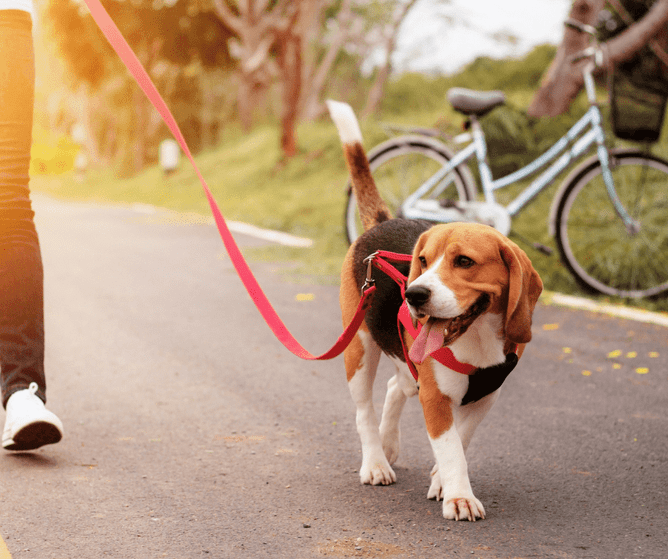Using a Long Line
Using a long line can be a great way to give your dog a bit more freedom if their recall isn’t reliable, if you want them to choose their own direction in the park/open space, or they want to go into spaces to sniff.
Always use a long line with a back attach nonrestrictive harness for safety and comfort.
They can be dangerous if not used properly or in the right environment so take note of these tips and have a practice without your dog first.
How to Hold
Always use 2 hands, keep your palms up and fold the excess lead backwards and forwards across the hand opposite to where your dog is so it doesn’t wrap around your hand.
Practice this skill without your dog first – tie something lightweight to the end of the lead, cast the lead out and practice gathering the lead in.
Keep your elbows at your waist, hands down, relax and take a breath.
Centre yourself – keep your feet at shoulder width apart, with knees slightly bent.
On the Move
Be aware of your surroundings. Long lines are best used in open spaces and not near roads.
It’s useful to teach your dog a ‘let’s go’ and ‘stop’ cue.
Keep the lead off the ground (try to allow a soft drape on the lead so there is no pressure) and allow your dog to choose their own adventure.
To lengthen the lead, allow the lead to slide gently through the hand closest to your dog.
To shorten the lead, fold the excess lead with the hand closest to your dog into the hand holding the remainder of the lead.
Lengthen and shorten depending on how far away you are from your dog and/or the hazards they may be approaching.
Stopping
To stop without jerking the lead, practice a ‘slow stop’ which is meeting the pressure your dog has on the lead and slowly relaxing the lead to bring your dog back into balance, then relax and take a breath (think of a train slowly coming into the station).
You can also ‘pump the breaks’ by gradually squeezing the lead with the hand closest to your dog.
Changing Direction
To influence direction or get your dog’s attention in a calm and gentle way, alternate sliding the lead from underneath, palms up (hand over hand like the lead is silk). One hand should be on the lead at all times. This creates light pressure on the lead rather than pulling your dog.
Move into your dog’s peripheral and slightly lower your body towards your dog (like an invitation to play) and allow them space to walk into while you continue to slide the lead encouraging them to come towards you as you change direction. Look where you want to go.
Relax and enjoy your walk! For dog training help or help using a long line, reach out to us today.

